A to Z - HIGHLIGHTS OF DERBY AND DISTRICT - PART 10
The A to Z – highlights of Derby and District is a 19-part series and will be published weekly.
Makeney – Mickleover Old Hall
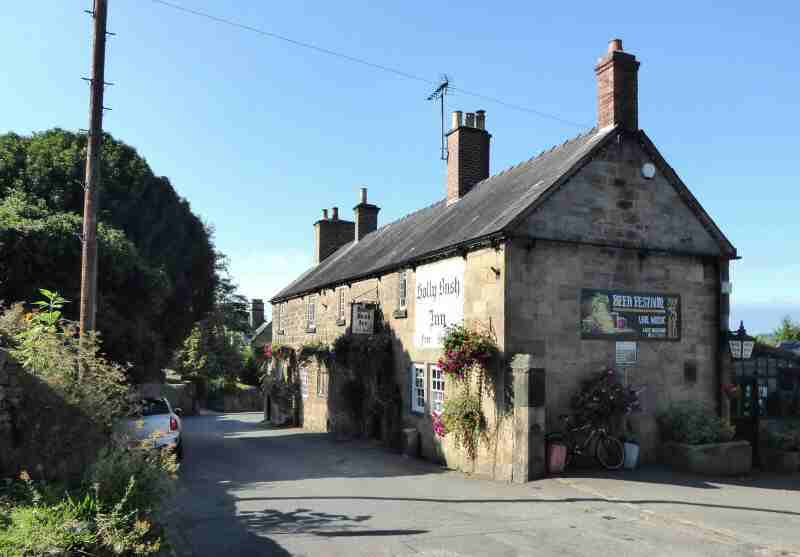
MAKENEY
Milford House on Derby Road was the home of the Strutt family before they moved to Makeney Hall. The latter had a view over most of the workers’ houses. Shutters protected nearly all the dwellings that had holes drilled through them so that internal lights were seen from outside. If any lights were observed shining after 11 pm, a warning would be sent about the dangers of loss of sleep.



MARKEATON – THE VILLAGE
The history of Markeaton goes back much further than when the public park was created. In Domesday Book, it was shown to be a large village with a church which may have been sited at Mackworth and a mill. A small group of buildings on the western side of the park date from the late 18th century. Home Farm, The Green and the Farm, all being of architectural and historical interest.
MARKEATON ORANGERY
Markeaton Hall was a brick mansion, built around 1755 to replace an earlier Tudor building. The park was originally part of the Markeaton Hall Estate, owned by the Mundy family from 1516. The Orangery, situated near the centre of the park, survived when the remainder of the hall was demolished in 1964. It was designed by Joseph Pickford, the Derby architect.
MARKEATON CRAFT VILLAGE
When Markeaton Hall was demolished, the stables were retained. In 1987, they became the home of the Markeaton Craft Village made up of several individual units. Where, at times, visitors can watch skilled craftspeople at work, making furniture, ceramics, stained glass and other products. The park has recently undergone a £3.5 million restoration project enabling significant improvements to be made to the craft village.
MARKEATON PARK
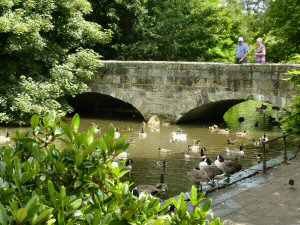
The Duke of Kent officially opened the park in June 1931. Since then, it has become one of the most popular parks in the East Midlands with an estimated one million visitors per year. The lake, which had been dug out in the 1920s to provide men with work during the Depression, was extended in 1933-34 and opened in July 1934. The pond that forms the source of Markeaton Lake is reputed to have been the site of the Mill Pond mentioned in the Domesday Book. Close by is a very pleasant Woodland Walk, particularly in the springtime when the daffodils, are in flower.
In the 21st century, the park is a popular venue for the young and not-so-young. The facilities have been enhanced over the years to include a children’s boating lake, amusement park, crazy golf and Derby’s biggest model railway, along with the ever-popular paddling pool. During peak periods, there is a bouncy castle available, canoes, rowing boats, electric cars and donkey rides. Other facilities have been added as part of the restoration project.
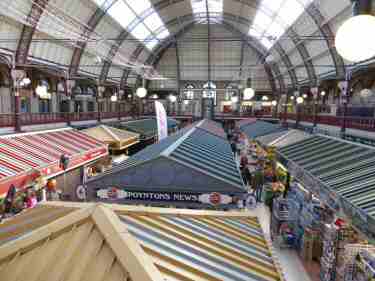


MARKET HALL
The covered Market Hall hides behind the Guildhall and is one of Derby’s greatest treasures. It is a fine example of Victorian architecture with a spectacular vaulted roof, using iron supplied by a nearby foundry. Inside, there is a wealth of unusual, classic and traditional stalls, shops and café bars. Repairs to the roof have recently been carried out and the internal layout revamped.
MARKETPLACE
According to recent excavations, the Marketplace almost certainly did not come into existence until around 1100. Derby’s first Market Charter was not particularly detailed. But the second, granted fifty years later, in 1204 was much more precise. It allowed a weekly market to be held from Thursday to Friday evening and granted the Burgesses the right to levy tolls from the traders, as well as punish thieves.
MERCIA MARINA
The marina is located alongside the road from Willington to Findern. It was a former quarry, created from farmland for gravel extraction for use in the construction of the A50. Later it was converted into a fishing lake. Before local businessman John Thornton, unveiled a multi-million-pound plan to turn it into Europe’s largest inland marina, with 600 berths, holiday lodges and on-site businesses. It is now a major tourist attraction.

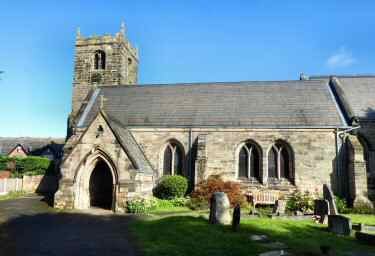
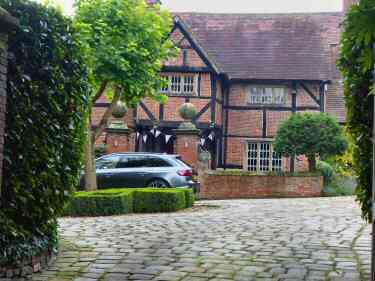
MICKLEOVER
The large residential suburb of Mickleover is located on the western outskirts of Derby. Most of the development there took place during the 20th century. Although further development is currently taking place on the western and northern fringes. In an area close to Uttoxeter Road are several interesting old buildings of such historical importance that in 1975 Conservation Area status was awarded.
MICKLEOVER – ALL SAINTS’ CHURCH
William the Conqueror is recorded as giving the town of Mickleover, with its church, to Burton Abbey. But there is no mention of a church in the Domesday Book. The present church has early 14th-century origins but mainly dates from 1858. The crypt was discovered by the verger. When he fell five feet down into it after the slab covering the entrance cracked into two pieces.
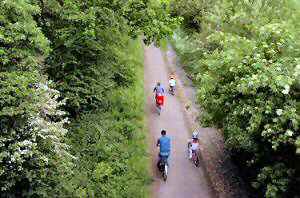
MICKLEOVER – MICKLEOVER RAILWAY WALK/CYCLE TRACK
In the late 1870s, the Great Northern Railway built a station, the Mickleover and Radbourne, on their Ilkeston to Egginton line. It was about one mile from the centre of the village, in a cutting-off Mackworth Road, now Station Road. The line did not have a particularly long life and has been turned into a footpath for walkers and cyclists.
MICKLEOVER – OLD HALL
The Old Hall is thought to be the oldest building in the village. Originally it was called The Cedars. It is a delightful, well-preserved timber-framed house of red bricks and black oak beams. According to legend Oliver Cromwell stayed at the house when his troops stormed Tutbury Castle.
